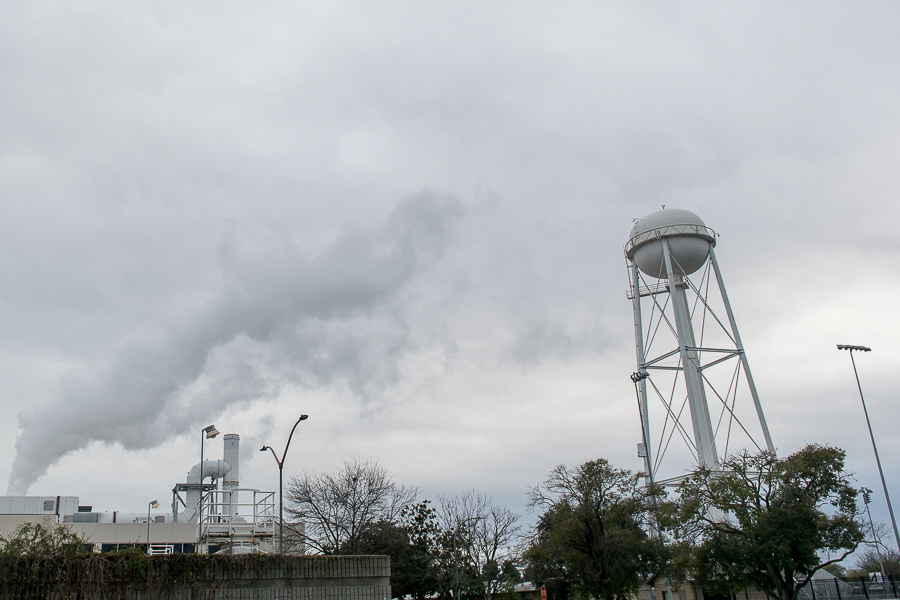
Multi-disciplinary studies aim to to reduce environment-related diseases, produce the next generation of environmental health scientists
What do autism, obesity, asthma, respiratory illness, allergies and a weakened immune system all have in common? They’re all outcomes linked to the environmental exposure of toxins in the air, pollutants in drinking water and even common household and personal-care products.
Environmental health science is the study of how the environment and surroundings impact human health and disease. This may include natural settings of the air, water and soil, indoor settings like home or work as well as the social features of the environment.
Dangerous environmental exposure impacts human health not only in underdeveloped areas, but also locally, near the San Joaquin and Central Valley Region, a total of 18 counties in Northern California.
“California has 2 out of the top 3 cities [Bakersfield and Porterville] with highest ozone level due to agriculture and high sun exposure […] and because of this there is a correlation between ozone and respiratory diseases,” said Scott Simon of the Department of Biomedical Engineering and vice president of the Federation of American Societies for Experimental Biology.
Studying how and why the environment changes is crucial in order to apply it to benefiting human health and prevent disease.
Over the past few thousand years, human civilization has drastically changed the composition of the environment with the development of agriculture, industrialization and disposal of various wastes. New pollutants in air composition, different microorganisms in soil and increased ocean acidification are only a few examples of alterations to the planet.
The composition and features of human surroundings constantly and rapidly evolve, not only due to human activity, but from interactions between other organisms, natural disasters, weather and unknown contributors.
The National Institute of Environmental Health Sciences (NIEHS), established in 1966, has contributed greatly to improving human health by studying the changes in the environment and our surroundings. Celebrating its 50th anniversary this year, the institute hopes to spread awareness of their history and milestones.
Significant and historic research funded by NIEHS included studies linking exposure to asbestos, mineral fibers found in rocks and soil, as well as lung tumors and mesothelioma. Workers in construction, shipbuilding and manufacturing were found to be at greatest risk for exposure. Published in the Journal of the American Medical Association in 1967, this study also found that smokers exposed to asbestos had a 10 times greater risk of developing lung cancer than nonsmokers.
Environmental Health Science is a field of science that encompasses multiple disciplines, such as medical, veterinary medical, government policy, engineering and agricultural and environmental sciences, with the aim to reduce environmental related disease.
Over the last few years, NIEHS studies focus on collaborating with the World Health Organization (WHO), with specific emphasis on children’s environmental health, climate change and human health, developmental origins of health and disease, e-waste and indoor air pollution.
“[The information from studies] can help the community to develop strategies or policies to reduce the specific source [of pollutant],” said Qi Zhang of the Department of Environmental Toxicology.
Zhang is currently working on targeting new techniques for measuring compounds in air pollution that contribute to cardiovascular disease. Zhang’s environmental health science study is funded by the the UC Davis Environmental Health Sciences Center, in collaboration with NIEHS.
The center at UC Davis has environmental health studies focused upon improving human health specifically in the San Joaquin and Central Valley region.
Wilson F. Ramírez-Duarte, a postdoctoral scholar, Tomofumi Kurobe, a project scientist and Swee Teh of the Department of Anatomy, Physiology and Cell Biology and School of Veterinary Medicine are working on a study funded by the center, which has to do with drought-related contaminants on local well and tap water on a fish model.
“If adverse [health] effects are observed in fish cultured in well water (e.g. mortality, abnormal swimming behavior, carcinogenic effect, endocrine disruption), we will initiate analytical chemistry to investigate causative chemicals,” Teh said. “[Eventually] this will provide us a list of contaminants that need to be regulated, and […] help protect public health in the local communities.”
Environmental exposures such as air pollutants, contaminated water and toxic compounds in surrounding areas can cause major health problems. Understanding how the environment changes and impacts human health has led scientists into the future of preventative disease and treatment.
Written by: Shivani Kamal — science@theaggie.org



